Machine Learning in Cloud Computing: the Real Value for Your Business
Machine learning in cloud computing is reshaping the way businesses analyze data, make predictions, and scale AI-driven solutions — all without building costly infrastructure from scratch or maintaining demanding hardware. Instead, dedicated teams tend to choose the seamless power of cloud combined with unmistakable machine learning. In this article, we have gathered the most frequently asked questions answered by our expert software developer, Taras Hrybyk. Machine learning in cloud computing explained, secrets of a successful data-driven solution revealed, and FAQs answered. Stay with us to find out how you can leverage the potential of machine learning in cloud computing for your business.
In short, today we will take a look at the following topics:
- What is machine learning in cloud computing? Machine learning in cloud computing refers to the use of cloud-based platforms and infrastructure to build, train, and deploy machine learning models at scale, without the need for owning or maintaining costly on-premise hardware.
- Is machine learning a part of cloud computing? No. Machine learning is something that you do with data (analyze, train, disturb). Cloud computing is an environment where you can interact with the data without the hardware.
- Is machine learning in cloud computing only for enterprise businesses? No! Today, machine learning in cloud computing is becoming as accessible as any other software development. It only takes to find a trustworthy cloud provider and train your model.
- What are the top cloud providers that support machine learning? The most trustworthy and affordable cloud providers on the market include:
- Amazon Web Services (AWS);
- Google Cloud Platform (GCP);
- Microsoft Azure; IBM Cloud;
- Oracle Cloud Infrastructure (OCI);
Go on with reading if you want to learn even more about machine learning in cloud computing via a one-of-a-kind guide to the predictive analytics solution.

- What is Machine Learning in Cloud Computing?
- How Cloud Computing Powers Machine Learning?
- Top 5 Use Cases of Machine Learning in the Cloud
- How to Implement Machine Learning in Cloud Computing? Expert Answer
- What is the core functionality of this platform?
- What is the role of machine learning and cloud computing in the solution?
- What tech stack did you use to build that ML solution?
- What are the key strengths of the solution?
- Taras, what is a glassmorphism?
- Can we say that the solution is successful so far?
- How to implement machine learning in cloud computing within such a solution?
- devabit Answers FAQs about Machine Learning in Cloud Computing
- Is machine learning part of cloud computing?
- What's the difference between machine learning and cloud computing?
- Which is more beneficial for businesses: ML or cloud computing?
- What are the data privacy and security risks of ML in the cloud, and how to mitigate them?
- Can small to medium businesses afford ML in the cloud, or is it only for enterprises?
- Why Listen to devabit?
What is Machine Learning in Cloud Computing?
Machine Learning in Cloud Computing refers to the use of cloud-based platforms and infrastructure to build, train, deploy, and manage machine learning (ML) models.
Instead of relying on in-house servers and costly hardware, businesses can leverage the computing power, storage, and specialized tools offered by cloud providers to run ML workloads on demand.
Simply put, machine learning in cloud computing combines the capabilities of artificial intelligence and the storage potential of scalable cloud platforms to help you train the ML model.

How Cloud Computing Powers Machine Learning?
When it comes to machine learning in cloud computing, it is vital to understand how it actually works, and that is exactly what we are about to cover below.
- First and foremost, machine learning is a component of artificial intelligence (AI) that enables computers to learn patterns from data and improve their performance on a task without being explicitly programmed.
- Cloud computing is the delivery of computing services, including servers, storage, databases, networking, software, analytics, and artificial intelligence over the internet instead of running them on local hardware.
- Machine learning in cloud computing works by using cloud-based infrastructure and services to build, train, and deploy ML models without owning physical hardware.
- Data is stored and processed in the cloud, where scalable computing resources (like GPUs/TPUs) handle the heavy workloads. Cloud providers offer ready-to-use ML tools, pre-trained models, and APIs, enabling teams to run experiments, train algorithms, and deploy applications quickly — all through a pay-as-you-go model accessible from anywhere.
Now, as we are all clear about what machine learning in cloud computing is exactly, you might question its usability. Fair enough. So let's talk about what we use machine learning in cloud computing for.
Top 5 Use Cases of Machine Learning in the Cloud
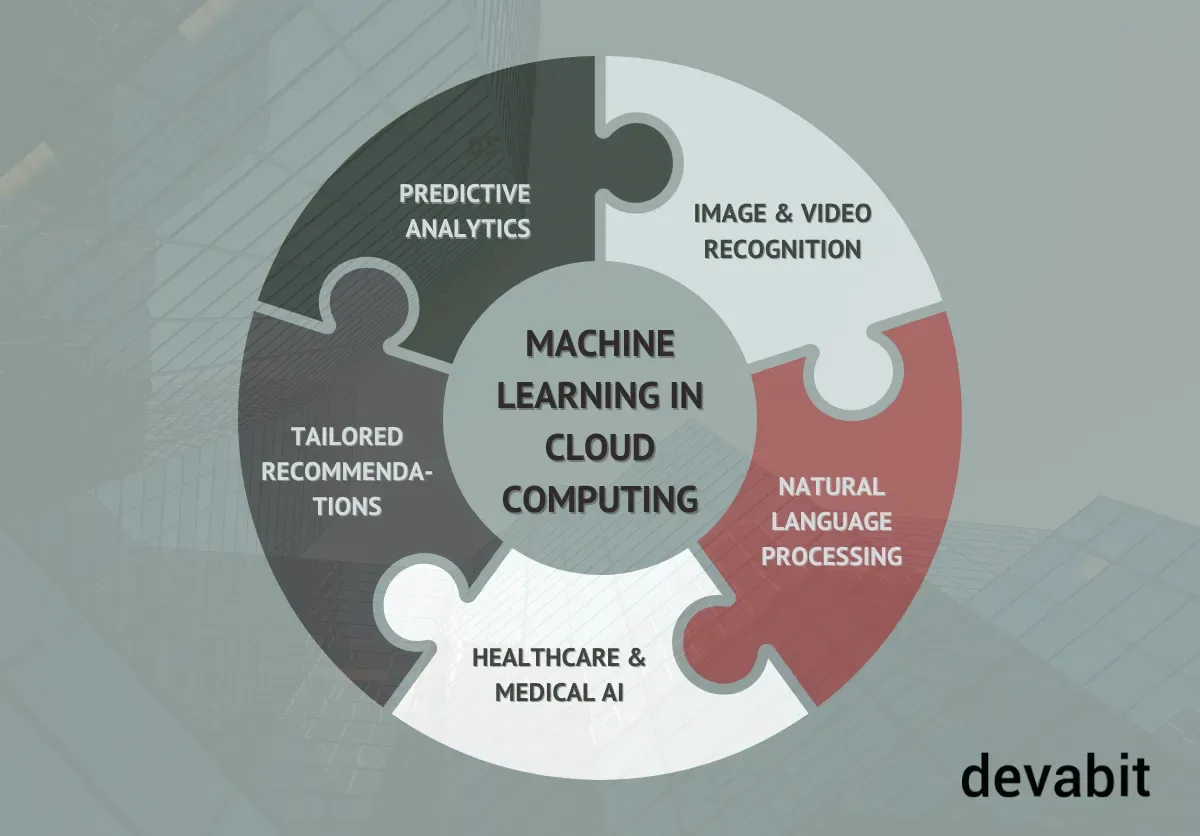
Image & Video Recognition
We cannot imagine 2025 without shocking AI-generated videos and images anymore. But little did we know that we had been training AI models with our own hands this whole time. Apart from numerous generative stuff, we now face the opportunity to use machine learning in cloud computing for next-gen recognition training, such as:
- Security and Surveillance: real-time monitoring of public spaces, detecting suspicious activities, and alerting security teams instantly.
- Retail and Customer Analytics: analyzing in-store video feeds to track customer behavior, optimize store layouts, and improve service.
- Healthcare Imaging: identifying anomalies in X-rays, MRIs, and CT scans to support faster and more accurate diagnoses.
- Media and Entertainment: automating content tagging, scene classification, and visual effects integration.
- Transportation and Smart Cities: Monitoring traffic flows, identifying license plates, and detecting accidents.
Natural Language Processing
When was the last time you asked Siri what you should cook for dinner? Yes, its in-depth answers with sometimes even a sense of humor are also the result of machine learning in cloud computing. Let's see where else we face natural language processing daily:
- Virtual Assistants & Chatbots: Alexa, Google Assistant, and custom enterprise bots that understand and respond in natural language.
- Sentiment Analysis: monitoring customer feedback, social media mentions, and reviews in real time.
- Machine Translation: delivering accurate, context-aware translations across dozens of languages instantly.
- Speech-to-Text & Transcription: converting audio and video content into searchable, editable text.
- Text Summarization & Classification: automating document processing, news aggregation, and content curation.
Tailored Recommendations
Ever noticed how your Netflix account tailors the recommendations to match your exact mood today? If you ever thought it was magic, now you know it is all the handiwork of machine learning in cloud computing. Have a look at a few more examples of tailored recommendations powered by machine learning in cloud computing:
- E-commerce: suggesting products based on past purchases, search queries, and seasonal trends.
- Streaming Services: offering playlists, shows, or movie suggestions aligned with user viewing habits.
- News & Content Platforms: delivering articles that match readers’ interests and engagement patterns.
- Travel & Hospitality: recommending destinations, hotels, or activities based on user preferences.
- B2B Platforms: suggesting relevant suppliers, tools, or resources tailored to a company’s industry and needs.
HealthCare & Medical AI
If you thought that healthcare is not the right place for AI, just keep in mind that medicine is one of the most data-rich industries ever. Patient and doctor data, anamnesis, electronic health records, administrative and personal info — way too much to analyze. That is why we actively implement machine learning in cloud computing for healthcare, like:
- Medical Imaging Analysis: detecting tumors, fractures, or anomalies in X-rays, MRIs, and CT scans with high accuracy.
- Predictive Analytics: forecasting patient readmission risk, disease progression, or treatment response.
- Drug Discovery: accelerating the identification of potential compounds through AI-driven molecular analysis.
- Virtual Health Assistants: offering symptom checkers, appointment scheduling, and medication reminders.
- Remote Patient Monitoring: analyzing data from wearables and IoT medical devices for early intervention.
Predictive Analytics
And finally, probably the most widely spread use case of machine learning in cloud computing — predictive analytics. The true wheelhouse of ML models lies in their ability to analyze enormous amounts of data in the blink of an eye; meanwhile, cloud computing ensures you never need costly hardware for that. So, when do we really meet machine learning in cloud computing, empowering predictive analytics?
- Retail & E-commerce: forecasting product demand to optimize inventory and reduce overstock.
- Fintech: predicting credit risk, stock movements, or potential loan defaults.
- Manufacturing: anticipating equipment failures to schedule maintenance before breakdowns.
- Healthcare: identifying patients at risk of readmission or disease progression.
- Energy: predicting consumption patterns for better grid management.
So many use cases for numerous industries and all powered by cloud and machine learning. And we think it is a perfect occasion to discuss how you can implement machine learning in cloud computing for your business.
How to Implement Machine Learning in Cloud Computing? Expert Answer
Why limit yourself to theory when you can already move straight to the practical part? That is what our clients thought, and Taras Hrybyk, a leading software engineer, ensured they got exactly what they needed.
Exclusively for this article, Taras agreed to find some time to let us peek behind the curtains of our custom-built solution, an extraordinary project combining machine learning in cloud computing with the next-gen predictive analytics tool for helping the users... Go right below to find out how our solution utilizes machine learning in cloud computing at its finest ;)
Finally, let's have a look at Taras answering questions about the role of machine learning in cloud computing emerging in our solution:
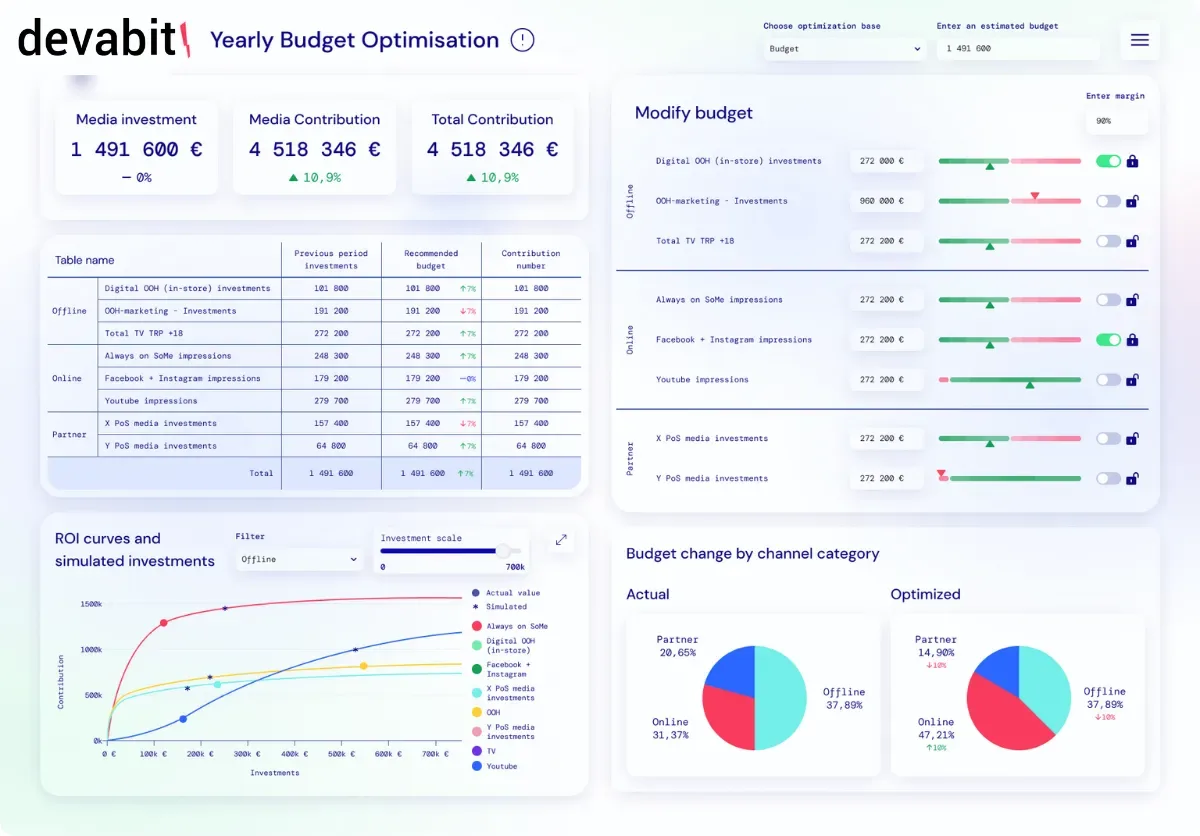
What is the core functionality of this platform?
"Basically, our solution is developed to help enterprise-grade companies struggling to shape their marketing strategy via providing them with a detailed, meticulously crafted marketing prognosis based on their input data and desired goals. Additionally, our machine learning model provides in-depth analysis of a current marketing strategy and offers a tailored budget plan to make your next investment ROI-guaranteed."
What is the role of machine learning and cloud computing in the solution?
"Starting straight from the code, machine learning techniques helped us build the Python code for the web version. Talking about the functionality itself, machine learning in cloud computing is the basis of our real-time data analysis and analytics provided for the client. We use custom-built cloud environments, which allow us to work with large data without any huge hardware."
What tech stack did you use to build that ML solution?
"The key programming language is Python, while secondary stacks include Node.js, React.js, PostgreSQL, Pandas, DuckDB, and Polars."
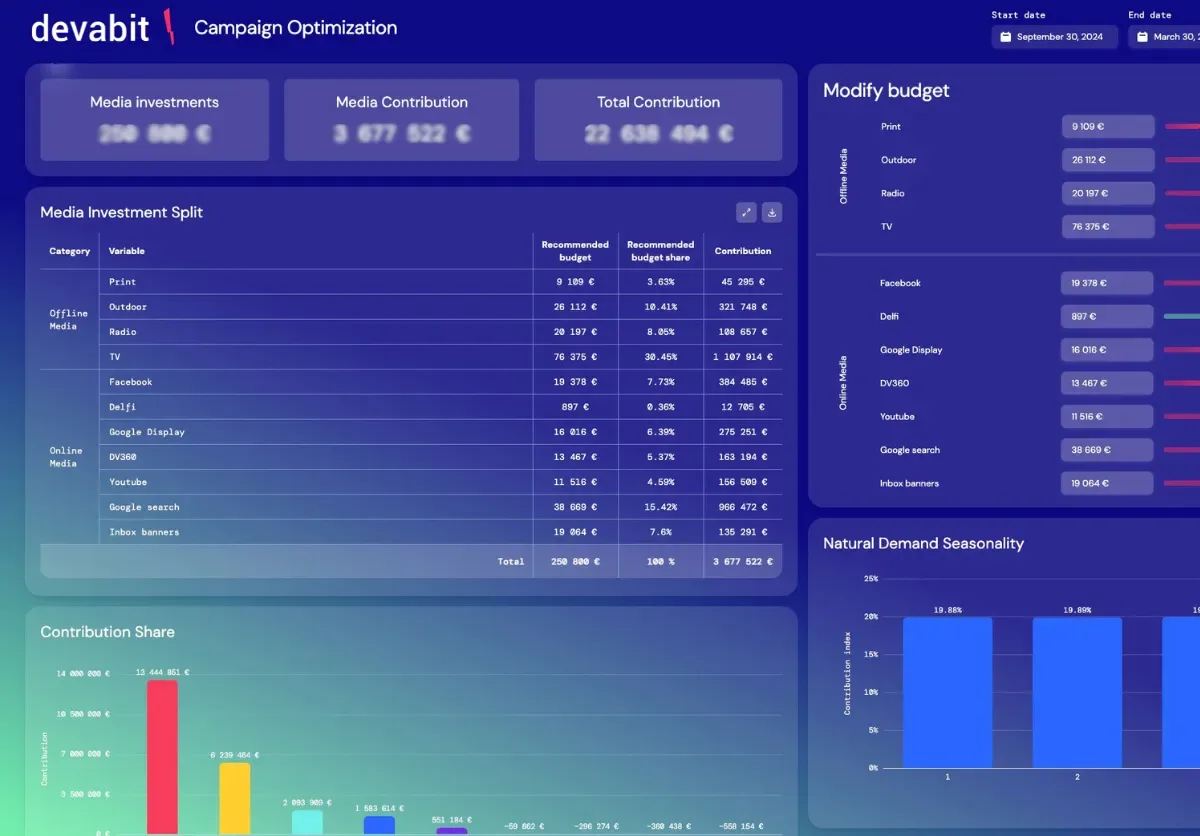
What are the key strengths of the solution?
"I would say the key strengths include two concepts, such as our data-rich ML model and visualization tools. First and foremost, machine learning in cloud computing enables the platform to conduct complex calculations and thorough data analysis in the blink of an eye while never stopping with the model's self-development based on newer and newer data incoming.
On the other hand, data visualization is a whole new level of amusement that our ML model provides. Our users have the opportunity to receive detailed data reports, analytics, and decision-making insights, all wrapped in easy-to-understand and highly detailed visual tables, graphics, pictures, or diagrams. Moreover, the solution's visual concept is mainly based on glassmorphism."
Taras, what is a glassmorphism?
"Glassmorphism — is the latest tendency in UI/UX design, mainly based on frosted or transparent, glass-like design elements. It usually includes blurry backgrounds, layered elements, vivid gradients, and holographic aesthetics.
Sorry for not clarifying it earlier :)"
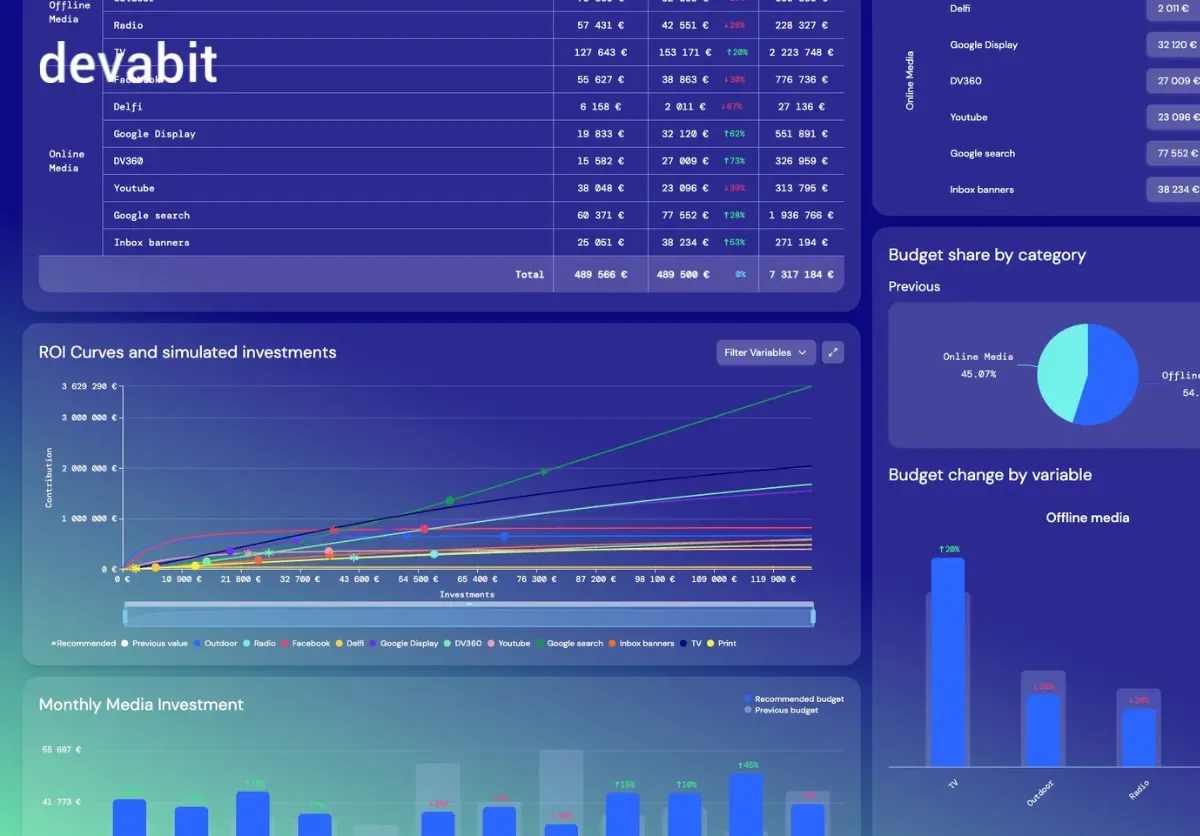
Can we say that the solution is successful so far?
"For sure! Even though the solution is still in its ongoing improvement stage, we can already see its significant return on investment, profit, and, what's more important, real value for the users. In fact, the solution was developed for enterprise-grade companies seeking expert help with marketing budget planning, and the platform is already providing professional help for numerous clients. Additionally, our platform offers several flexible subscription plans to meet unique user demands and ensure solid monetization."
How to implement machine learning in cloud computing within such a solution?
Here are the six simple steps to implement machine learning in cloud computing environment:
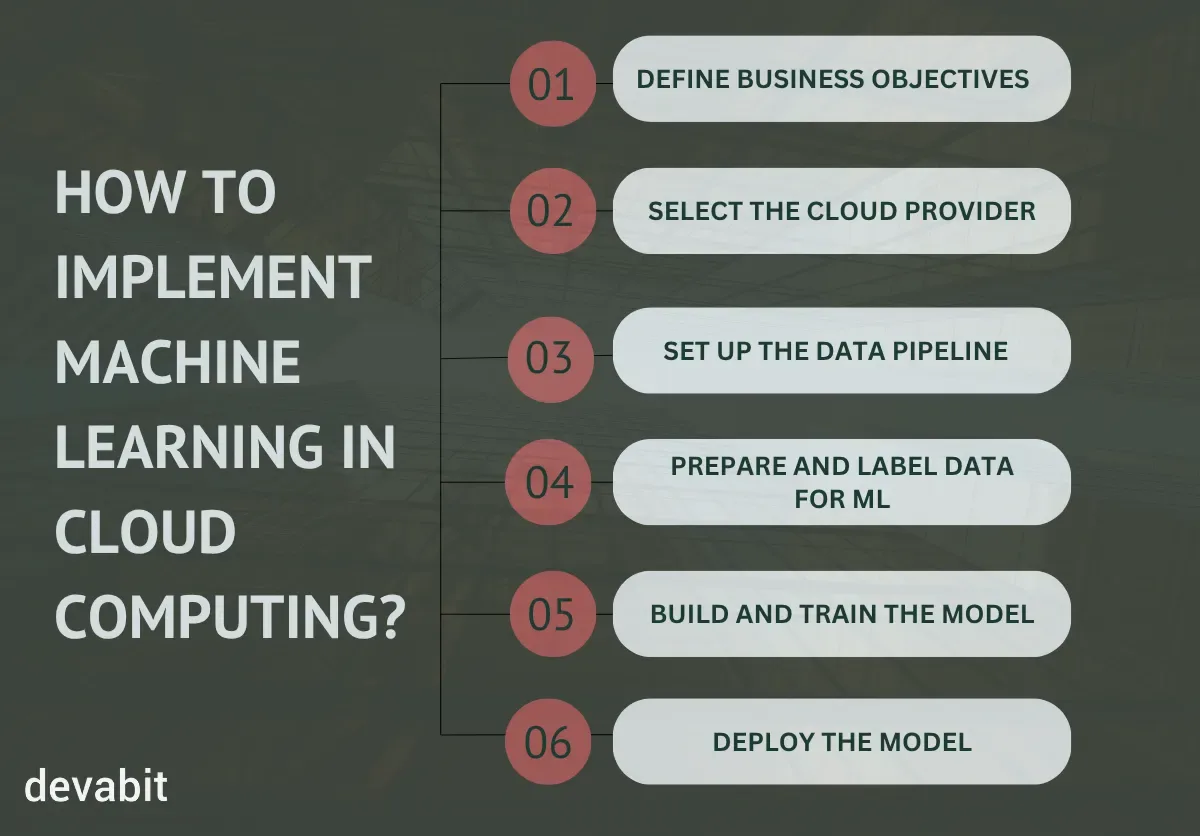
Step 1: Define Business Objectives and KPIs
This includes identifying your key business questions, like “Which channels bring the highest ROI in real time?”, then defining KPIs and setting realistic timeline borders.
Step 2: Select Your Cloud Provider and Core Services
The most important thing is to choose a cloud provider that supports real-time streaming and ML workflows.
The top options include AWS (Kinesis for streaming, SageMaker, Redshift for analytics), Google Cloud (Pub/Sub for streaming, Vertex AI, BigQuery for analytics), Azure (Event Hubs for streaming, Azure, Synapse Analytics), or custom-built cloud environments.
Step 3: Set Up the Data Pipeline
You’ll need to collect, process, and store real-time user interaction data from various platforms. Pipeline flow:
- Stream processing: use a processing layer to clean, enrich, and join incoming data via:
- AWS: Kinesis Data Analytics (SQL/Java);
- GCP: Dataflow (Apache Beam);
- Storage: Store historical + real-time data in a data warehouse (Redshift, BigQuery, Snowflake) for querying.

Step 4: Prepare and Label Data for ML
Your ML model will need:
- Historical performance data: channel spend, conversion rates, revenue.
- External context data: seasonality, market trends, and economic indicators.
- Feature engineering: e.g., rolling averages of ROAS, engagement scores.
Step 5: Build and Train the ML Model
For marketing budget planning, you should combine:
- Time-series forecasting (e.g., Prophet, ARIMA, or LSTM neural networks);
- Optimization models (linear programming or reinforcement learning to allocate budget optimally);
Example with cloud ML tools:
- AWS: SageMaker with built-in XGBoost or DeepAR forecasting.
- GCP: Vertex AI Forecasting API + custom TensorFlow model.
- Azure: Automated ML for regression + optimization script.
Step 6: Deploy the Model for Real-Time Predictions
You need low-latency inference so decisions update instantly.
- Deploy the trained model as a REST API endpoint in the cloud ML service.
- Connect this endpoint to your stream processing tool so every incoming data event updates predictions.
And you are almost there, your machine learning in cloud computing is all integrated, now you need to ensure regulatory compliance, add solid visualization tools, and implement robust data security practices.
Thank you, Taras! But it seems a few more aspects of machine learning in cloud computing remain uncovered. How about clarifying them right below?
devabit Answers FAQs about Machine Learning in Cloud Computing

Is machine learning part of cloud computing?
Technically, no. But while machine learning (ML) is not directly a part of cloud computing technology, today ML can heavily rely on cloud computing infrastructure. And here is how it works:
When you plan on building or training a machine learning model, you must consider the significant computing power, storage, or even specialized hardware it requires, and here is when we turn to cloud computing. Not every organization, startup, or even enterprise is ready to provide the resources needed to maintain such hardware in-house. In this case, machine learning and cloud computing merge to help companies access advanced AI technologies without the urge to purchase the costly-to-maintain infrastructure.
Cloud providers like AWS, Google Cloud, and Azure offer scalable, pay-as-you-go environments where developers and data scientists can:
- Store massive datasets;
- Spin up powerful virtual machines in minutes;
- Use pre-built ML tools and APIs;
- Deploy models into production quickly and securely.
Simply put, cloud computing allows you to implement machine learning techniques and train the machine you need without the urge to support costly hardware. Instead, cloud computing enables users to access machine learning via side servers and cloud storage. Thus, machine learning and cloud computing are two independent and robust techniques serving two different aims, but which can thrive and complement each other in a proactive combination.
What's the difference between machine learning and cloud computing?
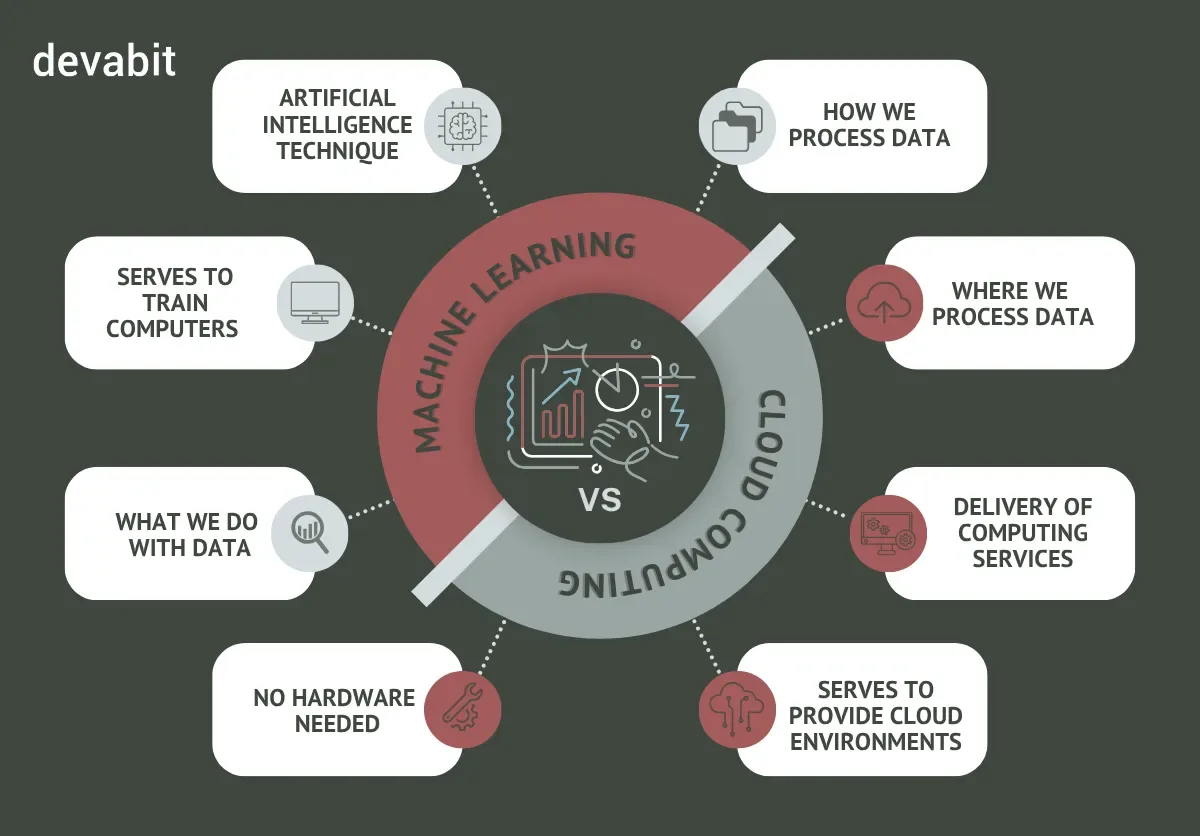
Even though machine learning and cloud computing are often used together, it is vital to understand that these two are entirely different concepts. Let's delve into why:
Machine Learning
- What Is It: the type of artificial intelligence techniques that is aimed to train machines or computers to learn specific patterns without being explicitly programmed.
- Why Do We Use It: for building models that can evolve and learn from the input data without direct programming.
- Where Is It Usually Used: image recognition, data processing and analysis, predictive recommendation systems, chatbots, bug detection and elimination, etc.
Cloud Computing:
- What Is It: the delivery of computing services (storage, servers, databases, intelligence, etc.) via the internet.
- Why Do We Use It: for accessing or providing computing services without the urge to maintain the hardware.
- Where Is It Usually Used: SaaS-based platforms, cloud data storage servers, hosting apps, delivering content, and running machine learning workloads.
In a few words, here is the main difference between machine learning and cloud computing:
Machine Learning = what we do with data
Cloud Computing = where and how we can do that
Which is more beneficial for businesses: ML or cloud computing?
In fact, it is challenging to compare whether machine learning or cloud computing is more beneficial for the business, as they are significantly different concepts, but let's see in which case it is better to choose this or that option.
- Startup or medium-sized business: cloud computing or storage is your first step towards remote data processing, website or platform maintenance, and optimized operational costs. If you build a solution requiring large data handling, cloud computing is more than enough to make your confident entry into web or mobile business.
- Data-rich or enterprise companies: machine learning enters the stage as soon as you are ready to move from mere web solutions to a whole new level of data processing. Whether you want your platform to provide real-time analytics, multi-language chatbots, personalized user experience and recommendations, machine learning is something that adds intelligence to your solution.
- Companies seeking innovative growth: machine learning in cloud computing is a combination of smart data handling and storage with next-gen functionality and AI tools, reached without the urge for costly hardware. This means teams can innovate faster, reduce overhead, and unlock data-driven insights with minimal technical friction.
Summing up, cloud computing and machine learning are both perfect strategies to implement for different stages of your business's evolution. However, machine learning in cloud computing requires already having a solid cloud-based background to further work with, even though it can be easily built from scratch.
What are the data privacy and security risks of ML in the cloud, and how to mitigate them?
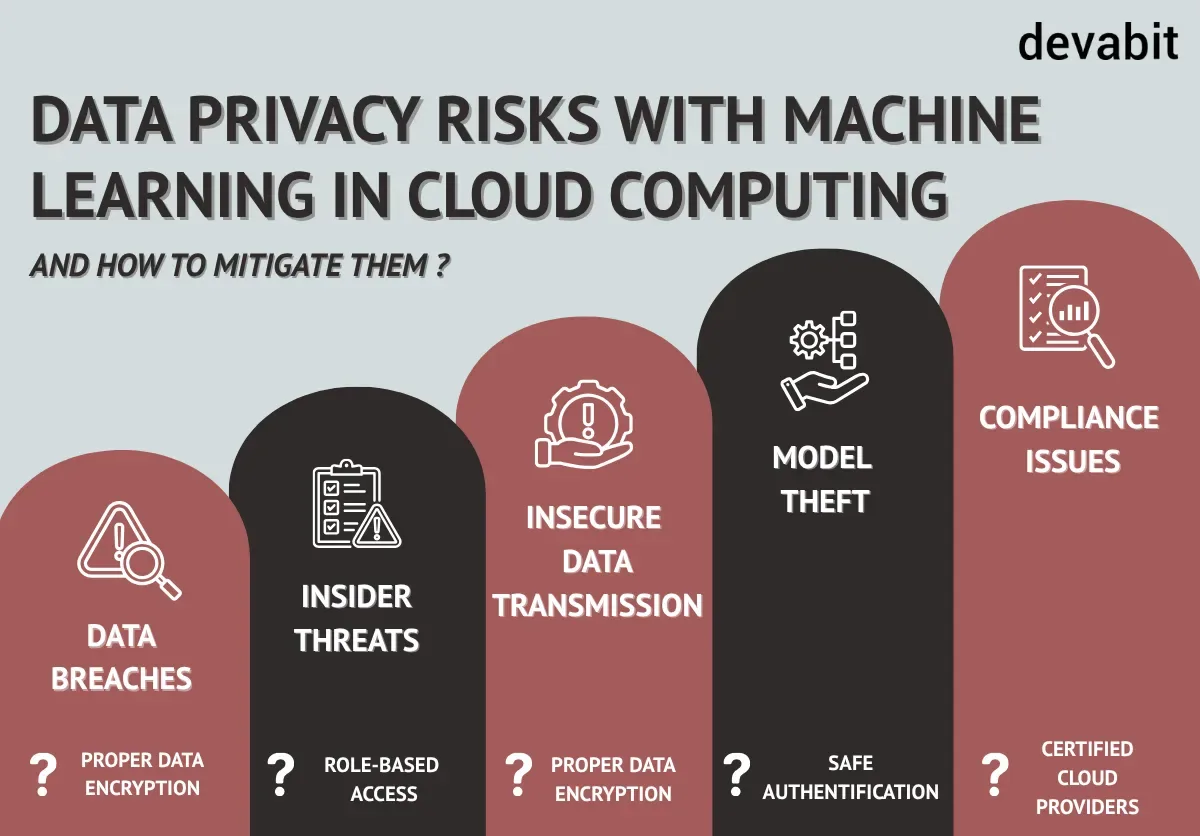
Even though machine learning in cloud computing is a proven and robust option for large data handling, we cannot exclude potential data privacy and security risks, such as:
- Data Breaches: when implementing machine learning in cloud computing, we must understand that our model can work with sensitive user, healthcare, finance, or corporate data, risking being exposed or damaged.
How to mitigate: proper data encryption & role-based data access.
- Insider Threats: working with machine learning in a cloud computing environment usually involves third-party vendors, which may appear unreliable or easy to mislead, resulting in leaked data or unauthorized access.
How to mitigate: role-based access & cooperation with trusted cloud providers, such as Google Cloud Platform, AWS, IBM Cloud, or other custom options.
- Insecure Data Transmission: machine learning in cloud computing involves data transmission between your internal or external systems, which may lead to data interception by potential attackers.
How to mitigate: incorporate proper data encryption.
- Model Theft & Reverse Engineering: if your machine learning model is deployed via public cloud APIs, it risks being stolen or reverse-engineered, basically leading to intellectual property loss or even data abuse.
How to mitigate: use model access via API only & implement proper authentication practices.
- Compliance & Data Residency Issues: being unaware of specific local or industry regulations or data protection laws may cause possible compliance issues.
How to mitigate: work with trustworthy cloud providers with certifications like ISO/IEC 27001, SOC 2 Type II, FedRAMP, HIPAA, and GDPR-readiness.
In a nutshell, machine learning in cloud computing, as any other data processing type, entails possible data privacy risks, but simply cooperating with trustworthy vendors and implementing robust encryption practices solves 90% of those.
Can small to medium businesses afford ML in the cloud, or is it only for enterprises?
Great news! Today, machine learning in cloud computing is more affordable for small and medium businesses than ever before. And while some still doubt, future-oriented companies are already choosing to benefit from ML advancements by opting for more cost-effective options. Let's discuss a few primary strategies in which you can implement machine learning in cloud computing in your beginner-level business:
- Pay-as-You-Go Pricing Model: when implementing machine learning in cloud computing via trusted providers such as Google Cloud, AWS, Azure, and others offering a PaYG approach, you have the power to pay only for the actual resources you use, avoiding unexpected expenses or long-term commitment. If your simple model requires short-term training, pay for a month of cloud computing, get what you need, and then leave.
- Scalability as the Main Advantage: start small, and go global gradually. Machine learning in cloud computing does not require significant investment in the initial phases, especially when you focus on start-up level goals. Your model's capabilities can grow along with your budget, offering flexibility and no additional overhead.
- Pre-Built Tools: just like busy people choose pre-cooked meals, your small business can choose pre-built machine learning tools, drag-and-drop interfaces, or ready APIs to train your models or integrate into the solution. Pre-built tools are always a safe space for minimal risk and investment.
- Trusted Providers: an often underrated option for truly saving your costs on machine learning in cloud computing is software development outsourcing via a trusted vendor. Usually, hiring, training, and managing the whole team of staff not only takes your time but also requires significant investment. Meanwhile, outsourcing enables you to take the shortest and easiest way to incorporate machine learning in cloud computing into your small or medium-sized business.
In short, today, machine learning in cloud computing is no longer a luxury option but a must-have for future-oriented businesses seeking innovative solutions. And thanks to various affordable options on the market, even startups can now incorporate machine learning in cloud computing.
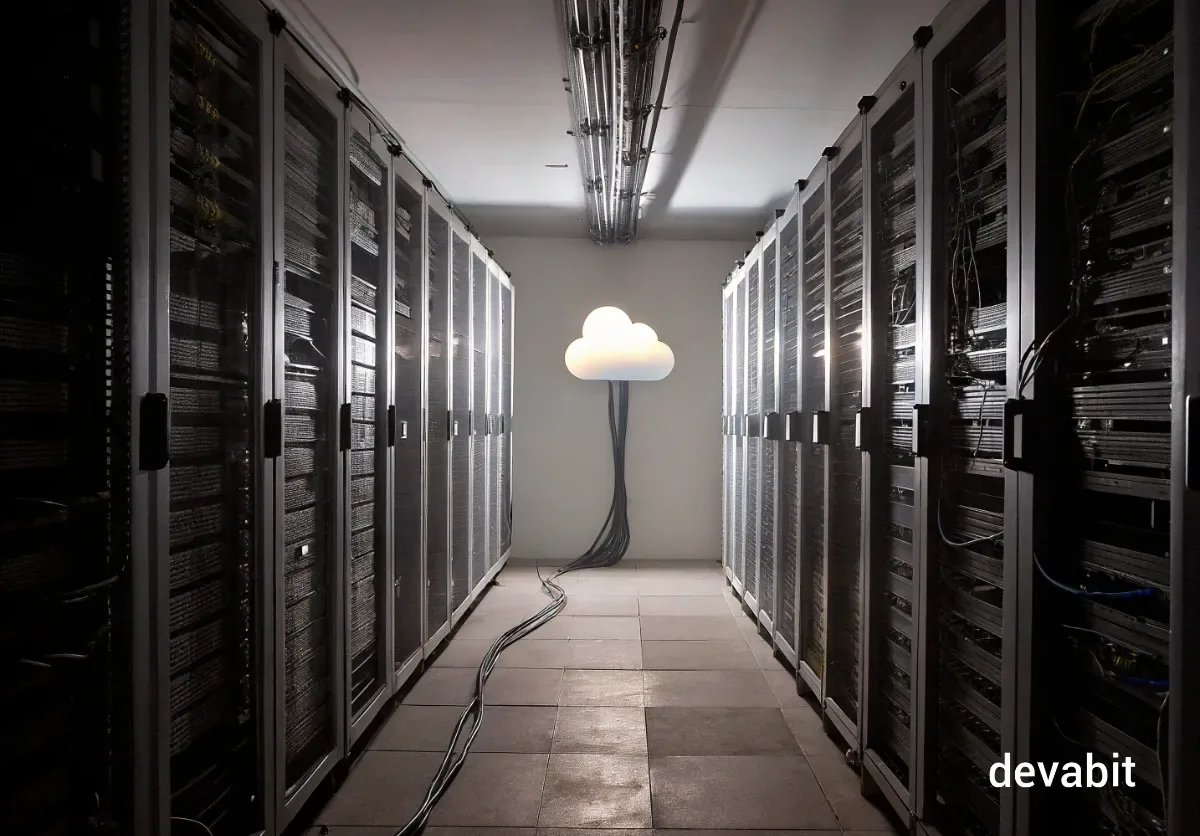
Why Listen to devabit?
With over a decade of hands-on experience in cloud-native development, AI implementation, and data-driven strategy, our dedicated teams have helped startups and enterprises across numerous industries harness the power of machine learning to drive growth, optimize operations, and make smarter decisions. Our cloud expertise extends far beyond storage solutions, and our company is dedicated to future-driven innovation, as showcased in our diverse portfolio. devabit experts can help you go from a mere concept to full-stack:
- Custom-Built Cloud Solutions;
- Cloud Migration & Modernization;
- Cloud QA & Support;
- Cloud Management Services;
- Containerization & Orchestration Services;
- Machine Learning in Cloud Computing.
Explore our Cloud Consulting Services to discover how we deliver remarkable solutions through serverless environments. Whether you are just exploring cloud-based AI or ready to scale your next big idea, our skilled consultants can bring not only technical expertise but also a deep understanding of your unique business needs. If you saw our above-mentioned solution and thought, "That is exactly what I seek!" — our remote developers and cloud engineers are always ready to discuss opportunities. Contact Us today to receive an initial consultation and make your first step towards AI-driven innovations.
Recent Publications
Don't miss out! Click here to stay in touch.
Discover More of Our Explainable Articles

Relevant Articles View all categories
View all categories CONNECT WITH US WE’RE READY
TO TALK OPPORTUNITIES
THANK YOU! WE RECEIVED YOUR MESSAGE.
Sorry
something went wrong



